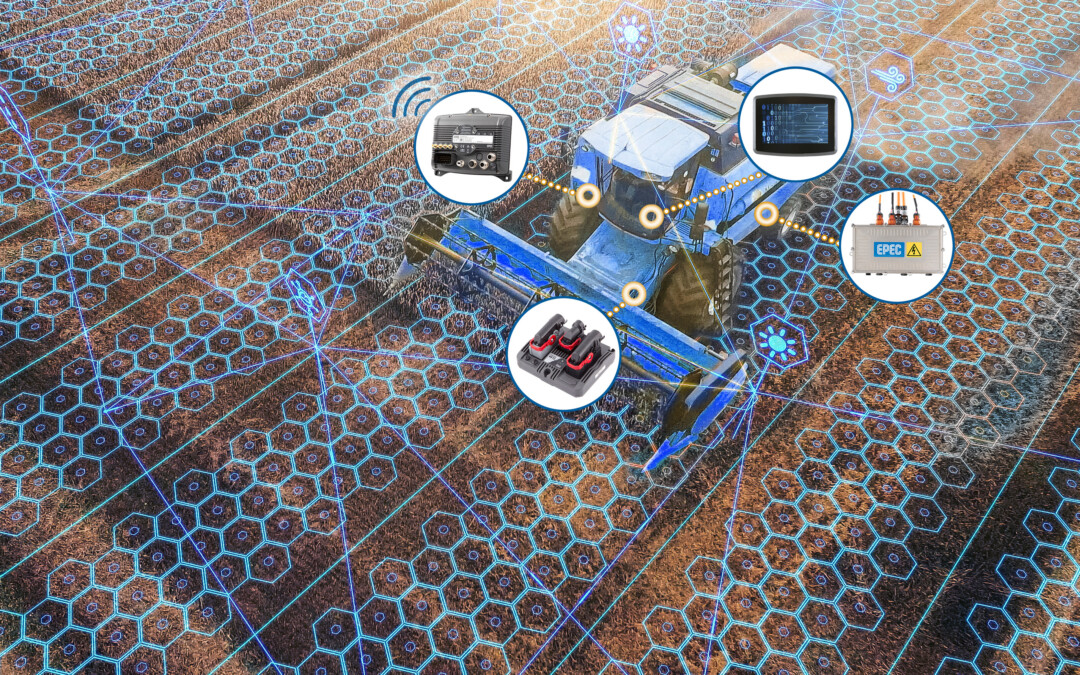Epec offers seamless integration of control systems, telematics and electromobility, with virtual testing to prove out the autonomous and zero-emissions vehicles of today – and the future.
The agriculture industry is experiencing a major shift as autonomous technology reshapes traditional farming practices and optimizes operational efficiency. Autonomous machinery is proving to be a great force revolutionizing the way crops are cultivated and resources are managed, prioritizing sustainability.
Precision, Safety and Perception
The machines are equipped with the capability to navigate the fields, guided by carefully calculated measurements and real-time mapping. The machines can effectively adapt to changing terrains and tasks, enhancing the precision of planting, fertilization, and harvesting. This precision translates to minimized resource wastage and maximized yield, aligning with the industry’s growing focus on efficiency and sustainability.
As autonomy integrates to farming practices, the role of functional safety becomes crucial. The integration of various systems within autonomous machinery demands a robust approach to ensure that operations remain safe and reliable. Functional safety standards play an important role in this regard. The standards provide the framework to assess, mitigate, and manage risks associated with autonomous systems, safeguarding both operators and the environment.
Real-time data
Perception systems include an array of sensors, cameras, and algorithms that gather and process environmental data in real time. This data is then translated into actionable insights, enabling autonomous machinery to navigate complex agricultural scenarios. The ability to make informed decisions enhances route optimization, reduces energy consumption, and promotes environmentally-conscious practices, paving the way toward sustainable farming.
All of the above technologies generate a vast amount of complex data and algorithms. By creating virtual environments to test and refine algorithms, developers can fine-tune machinery behavior before deploying it in the real world. This approach accelerates development timelines, reduces costs, and minimizes the ecological impact associated with physical prototyping. Epec utilizes these tools and processes to ensure that the systems align with the customers’ evolving demands.
The rise of autonomy in agriculture is supported by technologies like edge computing. Edge computing empowers machinery to process data locally, ensuring quick decision-making while minimizing latency. Moreover, accompanied with remote connectivity, the machine systems enable real-time monitoring, updates, and diagnostics, enabling managing operations efficiently, even from a distance. This optimizes resource allocation and results to a more resource-efficient agricultural machinery.
One machine, many systems
Epec control, telematics and electromobility system products are engineered to be compatible with different topologies with seamless integration between systems in various agricultural machinery setups. Furthermore, each product can be customized to suit the specific needs of the customer, resulting in solutions that align with the OEM’s needs.
Simulation methods are Epec’s approach to engineering. By building machine applications with virtual models, Epec refines algorithms, tests performance, and ensures that each product is well tested before it enters the real world. This iterative approach minimizes risks, accelerates development timelines, and ensures the reliability of Epec’s solutions.
Seamless integration
Current and future machine technologies require efficient calculation power, edge computing, functional safety and connectivity. At the same time, the machines must be developed as a whole, creating a holistic view of the entity rather that multiple separate systems. Epec’s solutions are based on that ideology. That is also why Epec has developed Epec Flow electromobility system that integrates seamlessly with the control and telematics systems. Epec Flow Power Distribution Units distribute the power for the third-party components such as electric motors, battery systems, auxiliary converters, and external chargers reliably and safely making it possible to optimize and automate the power distribution.
Level two autonomy
With the upcoming Epec Core Unit complementing the existing Epec 6200 unit, Epec is also extending assistance systems up to level 2 autonomy. Through research and development, Epec is engineering solutions that seamlessly integrate autonomy into agricultural practices. By utilizing simulations and model-based design, Epec ensures that the solutions incorporate innovation and sustainability. Epec is capable to adapt assistant and autonomous solutions to a wide range of mobile machine systems, whether integrating them into new systems or retrofitting them onto existing ones.


